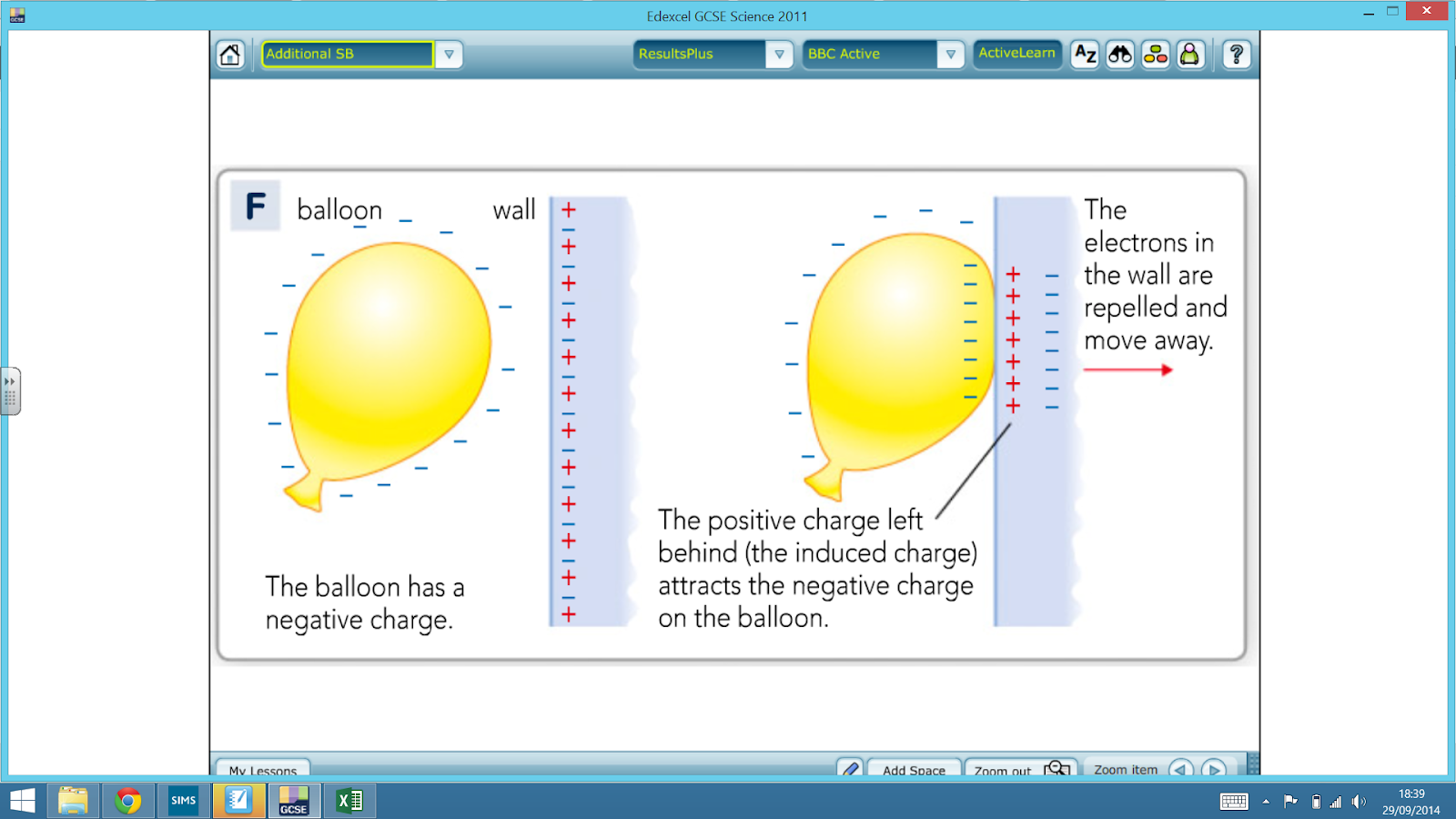Wednesday, 4 December 2013
Monday, 25 November 2013
Thursday, 21 November 2013
Charging by induction eg. balloon sticking to wall, comb and paperetc...
Can someone create a post that explains this nicely please. Copy and paste or a link is fine, own words is better!

1.8 Dangers of electrostatics (sparking, earthing etc...)
Check out this full explanation I found on a revision website...
http://www.gcsescience.com/pse7-electrostatic-charge-spark-fuel-fire.htm
There's also a nice animation on the BBC bitesize page...
http://www.bbc.co.uk/schools/gcsebitesize/science/add_edexcel/static_elec/staticact.shtml
http://www.gcsescience.com/pse7-electrostatic-charge-spark-fuel-fire.htm
How can Fuel Flowing through a Pipe cause an Explosion?
Care must be taken to avoid sparks when putting fuel in
cars or aircraft. The fuel itself is an insulator (a hydrocarbon)
and charge can be transferred as the fuel flows through
a pipe if the pipe is also an insulator. The transfer of charge
happens because there is friction between the fuel and
the pipe. As the nozzle (the end) of the pipe is brought
close to the fuel tank, a spark can jump between the two
igniting the fuel. This can cause a serious explosion,
particularly with aircraft which are filled at a very high speed.
cars or aircraft. The fuel itself is an insulator (a hydrocarbon)
and charge can be transferred as the fuel flows through
a pipe if the pipe is also an insulator. The transfer of charge
happens because there is friction between the fuel and
the pipe. As the nozzle (the end) of the pipe is brought
close to the fuel tank, a spark can jump between the two
igniting the fuel. This can cause a serious explosion,
particularly with aircraft which are filled at a very high speed.
The spark can be avoided if the pipe nozzle
is made to conduct by connecting an earthing strap to it
and so any charge can be safely conducted away.
An earthing strap connects the pipe to the ground (the Earth).
In addition, a cable can connect the pipe to the fuel tank,
so that there can be no difference in charge between them.
is made to conduct by connecting an earthing strap to it
and so any charge can be safely conducted away.
An earthing strap connects the pipe to the ground (the Earth).
In addition, a cable can connect the pipe to the fuel tank,
so that there can be no difference in charge between them.
There's also a nice animation on the BBC bitesize page...
http://www.bbc.co.uk/schools/gcsebitesize/science/add_edexcel/static_elec/staticact.shtml
Monday, 4 November 2013
LOs for Topic 1: Static and Current Electricity
I want you to look at this list and tell me...
- the LOs you have learnt,
- the ones you are happy with but now need to revise and
- the bits you don't get at all.
Saturday, 26 October 2013
Introducing the physics blog
This blog is for year 11 GCSE science students at St. Julian's School.
As the year progresses I hope it will bring the physics together topic by topic.
I am thinking of posting things like...
It's an idea that I'm keen to try, I think it could be a really useful way to learn together.
@physicsforde
As the year progresses I hope it will bring the physics together topic by topic.
I am thinking of posting things like...
- A summary of the learning objectives for each topic
- Links to useful websites
- Revision hints and tips
- Photos and videos
- Your own ideas and suggestions
- Comments on the topic eg. what bits are difficult or don't you get
- Examples of things you've done well so others can learn from them
- Questions, lots of questions!
- and answers... I'd be great if you respond too.
It's an idea that I'm keen to try, I think it could be a really useful way to learn together.
@physicsforde
Subscribe to:
Posts (Atom)


